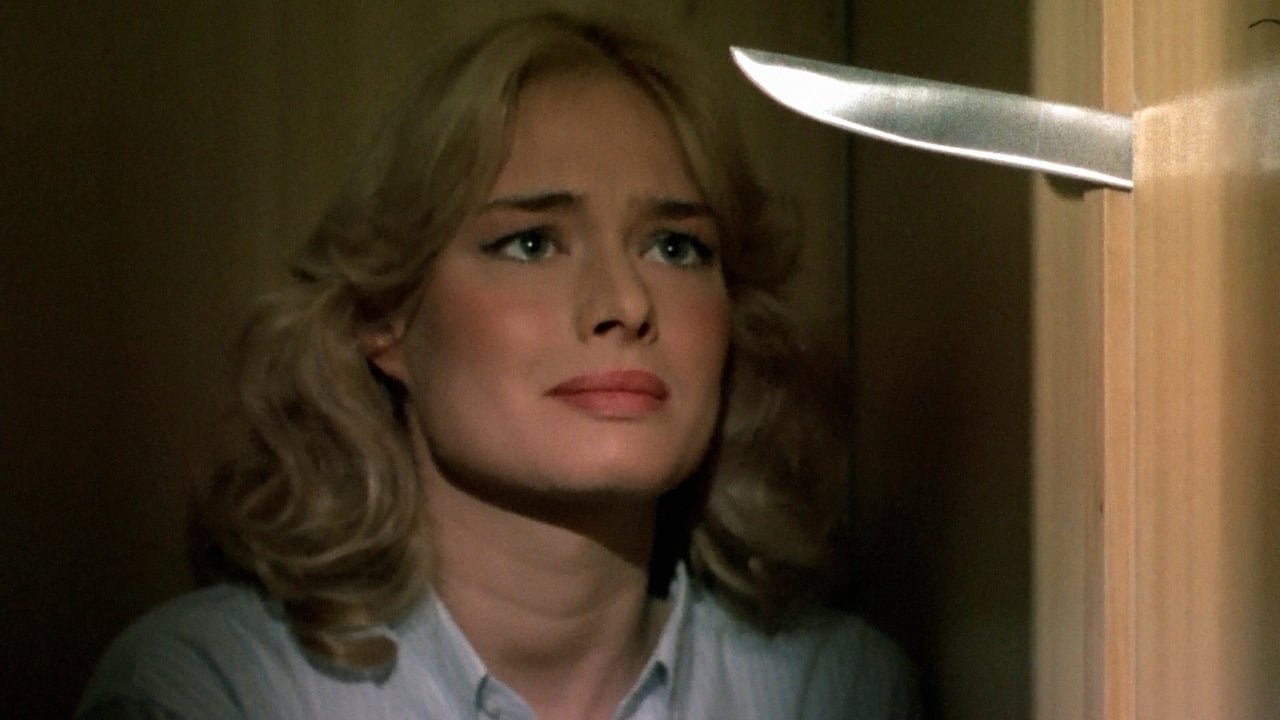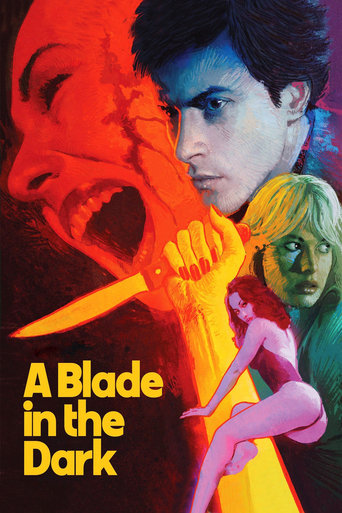

As the son of the godfather of giallo, Mario Bava, director Lamberto Bava had a lot to live up to when he entered the film business as a horror movie director. Likewise, so did his second film, "A Blade in the Dark," coming on the heels of his undeniably strong debut effort, "Macabre." Despite a few misfires here and there, Bava's sophomore effort (mostly) cuts deep. Originally conceived as a four- part anthology TV series, the film has an unusual pace and generally off-beat vibe that may be off-putting to some viewers, but when the film gets going, it really knocks you off your feet (or couch?) with its prolonged and cruel death scenes and proto-meta plotting.The film opens on two young boys -- who are as annoying as they are mean -- goading another boy to venture into a dark basement by incessantly chanting "You're a female!" at him. Sure enough, the kid takes the bait, and not long thereafter, a bloody tennis ball is thrust in the bullies' direction, sending them into a screaming frenzy. It's not the opening of the movie, per se, but the first scene of a new horror movie being scored by Bruno (Andrea Occhipinti), a film composer working alone in a rented villa that holds many mysteries. Among these mysteries are why beautiful women seemingly wander in and out, uninvited and unexpected, before succumbing to their grisly demises. Gee, a "No Trespassing" sign might suffice, no?Bava milks the atmosphere for all its worth, turning a slightly padded plot into random bursts of pure shock. There are a couple of stalk scenes that walk a fine line between tense and patience- testing, but the payoff is almost always worth it. Likewise, there's enough mystery and intrigue to keep the whole thing from going off the rails. Perhaps a little tightening would make the film pop that much more (it badly needs 15 minutes or so shaved off), but "A Blade in the Dark" remains pretty darn razor sharp just the same. It's not the finest giallo with the name Bava attached, that's for sure, but it's definitely worth reaching into the dark for.
... View More"A Blade In the Dark" is a stupid, boring movie about a guy scoring a horror film in a villa where women drop in to be murdered. He also has a pervert of a handyman who hangs around spying on the women and providing an obvious red herring.There's very little nudity and no sex. Only one of the women takes her top off briefly.The "suspenseful" bits are handled moronically. A lady dives into a swimming pool and the music suddenly turns spooky. Is there something inherently scary about swimming in a swimming pool? No? Then why the music? As soon as she gets out, the music stops. What's the deal? If what's on screen hasn't given us any reason to be scared, scary music just seems bizarre and out of place.The murder weapon used for the first killing is also ridiculous. It's a Stanley knife with a plastic base. It looks like something you would find on a particularly OCD-having salaryman's desk: you know, the guy in the office who has all his pencils engraved with his name and won't let you borrow anything. It's not anywhere near dangerous enough to kill someone who could put up the least resistance.Later, a the handyman gets repeatedly bashed with his own spanner (ho ho) and all that comes from it is a bit of fake blood. So why doesn't he resist? He just stands there and let's his noggin get flogged.Anyway, there's no mystery in this movie. The killer turns out to be someone we haven't met and know nothing about. There are some scenes later on that could have been scary but happen far too late, and after far too many stupid scenes, to be as effective as they could have been in a better movie.Bava Jr. was apparently no better a filmmaker than Bava Sr., but at least he isn't ridiculously overrated.
... View MoreLamberto Bavas' amusing Giallo "A Blade in the Dark" is more straightforward than most; it's reasonably stylish yet never goes for the truly bizarre or nonsensical. The director, working from a screenplay by husband and wife writers Dardano Sacchetti and Elisa Briganti, does a respectable job of balancing traditional suspense with some in your face gory mayhem. (It's highly recommended that one see this in uncut form.)Andrea Occhipinti plays Bruno, a film composer who isolates himself in a beautiful villa to work on his score for a horror film directed by his friend Sandra (Anny Papa). Soon, however, sexy lady neighbours meet gruesome demises as a creepy killer is haunting the premises. Bruno becomes obsessed with the circumstances and takes it upon himself to solve this mystery.Even if one is able to figure everything out early on, the film is still solidly entertaining. It benefits from Bavas' use of the locations and his flair for the macabre. The murderer switches back and forth between an exacto knife and a kitchen knife, and shows no mercy. One particular murder sequence takes place in a bathroom and is very sadistic. There's some undeniable silliness - for one thing, a pesky invertebrate is referred to as a cockroach when we can clearly see it's a spider. Some viewers may take issue with the performances by the actors doing the dubbing, but others may find them entertaining.The acting is basically decent. Handsome Occhipinti is ably supported by luscious ladies Papa, Fabiola Toledo as Angela, Valeria Cavalli as Katia, and Lara Lamberti as Julia. Assistant director Michele Soavi also has the key supporting role of Tony. Fans of Lucio Fulcis' "The House by the Cemetery" will note the presence of Giovanni Frezza, a.k.a. the infamous "Bob", in the film within the film.Ultimately fairly twisted, "A Blade in the Dark" is a nicely shot, sometimes spooky film with a music score (by Guido and Maurizio De Angelis) that is sometimes repetitive but still effective. It goes on for about 109 minutes, so it does sort of drag at times, but overall it should be acceptable viewing for fans of this genre.Eight out of 10.
... View MoreThis movie has almost everything a giallo should contain. Sexy women,a brutal killer and gore. An observant and experienced viewer may be able to predict the identity of the killer early on but there are more than enough red herrings to make you doubt your self. There are lot of scenes in which cheesy clichés could have ruined the experience. Somehow the director manages to overturn these clichés into real tense scenes. And for once the main character is not a complete moron. This guy is real charismatic in the movie and his seriousness about all of the events make the movie even work better. Of course this movie has it's share of flaws where plot and logic collide. Especially in the rushed ending. But it didn't bother me in the slightest. Effective giallo!
... View More